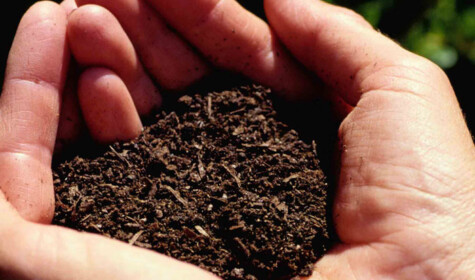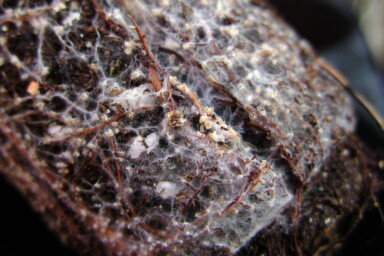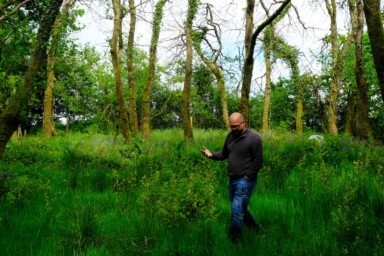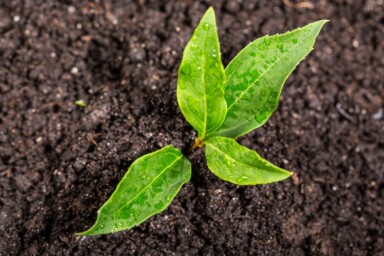Along with air to breathe and water to drink, soil is one of our most important natural resources – without it, we would starve. Soil is not only the source of our food. It also plays a crucial role in supporting diverse flora and fauna, providing clean drinking water and regulating the climate.
However, due to poor farming practices, soil is degrading at an alarming rate. In 2022, the UN warned that damage to land by humans is increasing and 40% of land is degraded, depleted of soil fertility, water, natural resources and biodiversity. Intensive farming methods fail to conserve soil quality, and, if we do not make significant changes in how we farm, food production will inevitably decline.
The Environment Agency has revealed that, as a result of poor farming practices in England and Wales, 4 million hectares of land are currently at risk of compaction, which causes waterlogging and restricts plant growth, with a further 2 million hectares at risk of erosion. Arable soils are losing 40-60% of their organic carbon, whilst 300,000 hectares of UK soil is contaminated by heavy metals, plastics, sewage sludge and manure; further, microplastics, which have “unknown consequences”, are pervasive in UK soil and can carry harmful chemicals.
While there are inspiring projects from around the globe driven by farmers who care for their soil, and examples of how once degraded land, and even desert, is now producing food and sustaining local communities again, there are many more examples of abused soils in serious decline.
To mark this year’s World Soil Day, let’s take a closer look at this extraordinary and life-giving natural resource.
Ten soil facts
- Over 95% of our food comes from the soil. The quality of soil influences the quality of food, especially in relation to the content of important trace elements, such as selenium and zinc, and arguably also in relation to taste.
- The microorganisms in three tablespoons of soil outnumber the world’s human population. The more fertile the soil is, the more organisms it has living in it. These organisms include bacteria and fungi, as well as larger soil creatures like nematodes, earthworms and ants. All are required for the health of soil.
- Soil is a mixture of minerals from rocks (45%), organic matter derived from decaying plant and animal material including the tiny living creatures in the soil (5%) – along with air (25%) and water (25%). It takes approximately 500 years for one inch of soil to form.
- Soil still contains more carbon than the atmosphere and all the world’s forests combined. Soil is one of our key defences against climate change because of this. The healthier the soil, the more carbon it holds. Carbon in the soil is healthy but when released in the air as carbon dioxide, it can be problematic.
- Soil organic matter is about 50% carbon. Humus is dark, stable, organic matter in healthy soil. Each gram of humus can hold twenty times its own weight of water, allowing soil with high organic matter to act as a sponge to soak up heavy rain and continue to provide moisture for crops during dry conditions.
- To increase humus levels by adding organic matter, it is vital to compost it first in an aerobic way to introduce oxygen before adding it to the soil.
- Most cropland globally has lost 30-40% of its organic matter. Well-managed grassland that is not overgrazed generally rebuilds organic matter.
- Pesticides are damaging to soil, killing a range of organisms that are vital to soil health. Despite this, pesticides, fungicides and herbicides are still widely used in agriculture and these chemicals have become “the most significant driver of soil biodiversity loss in the past decade”. Their danger to soil organisms is now widely evidenced through a range of studies that show impacts on soil organisms including increased mortality, reduced growth and reproduction, along with a broader reduction in the diversity of species. Regulators have largely turned a blind eye to their use.
- The Grapes of Wrath by John Steinbeck tells the story of how soil erosion resulted in families having to leave their land in the 1930s to become migrant workers. Unsustainable farming practices, which had replaced native deep-rooting long grasses with continuous cropping of mostly wheat, caused severe soil degradation. The Dust Bowl culminated in three million people leaving farms in the prairies of North America and Canada.
- History shows that civilisations, like the Sumerians (the world’s first literate culture) which flourished in Mesopotamia from 3000 BC, came to an end because of over-cropping and over-irrigation of their soils. Irrigation in hot countries is a major cause of salinisation – the build-up of salts in topsoil – because evaporation prevents minerals being taken down to plant roots. As US President, Franklin D. Roosevelt said: “A nation that destroys its soil, destroys itself.”
This article is an adaptation of an article previously written by Elisabeth Winkler for the Sustainable Food Trust. Image available here under a Creative Commons license.
To delve deeper into soil health, we recommend this article by Richard Young, ‘More things in Heaven and Earth: Mycorrhizal fungi, ploughing, no-till and glyphosate‘.






